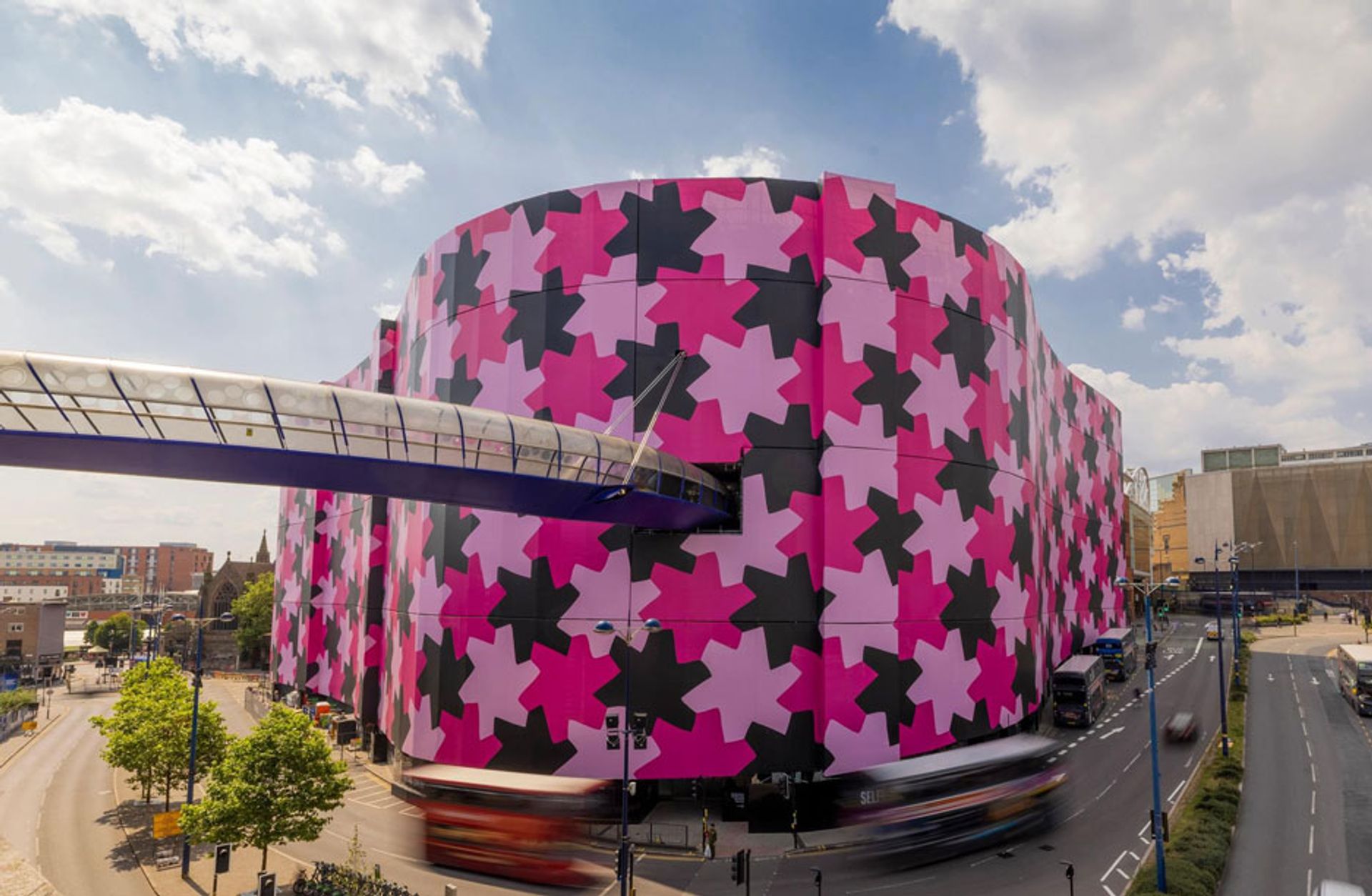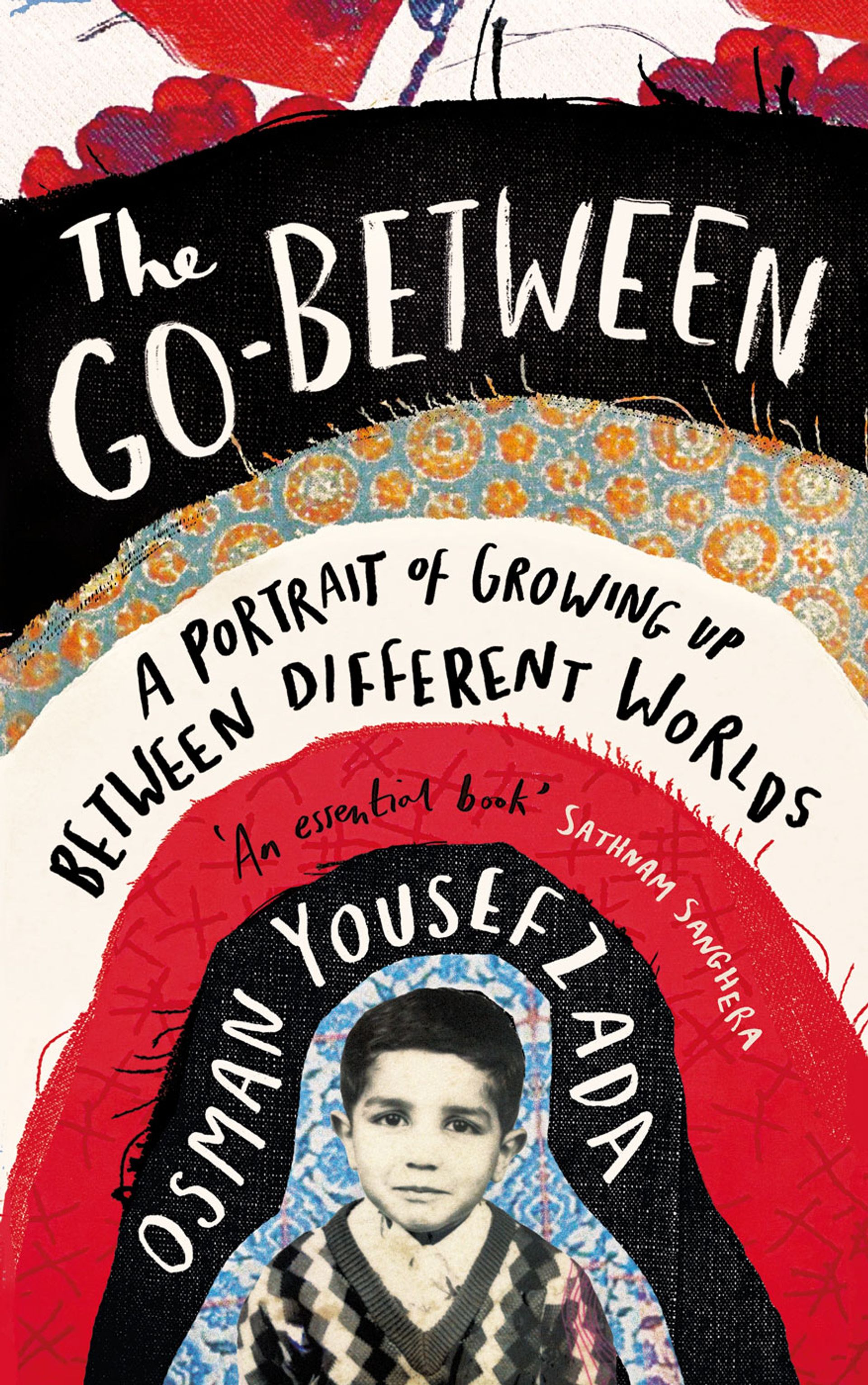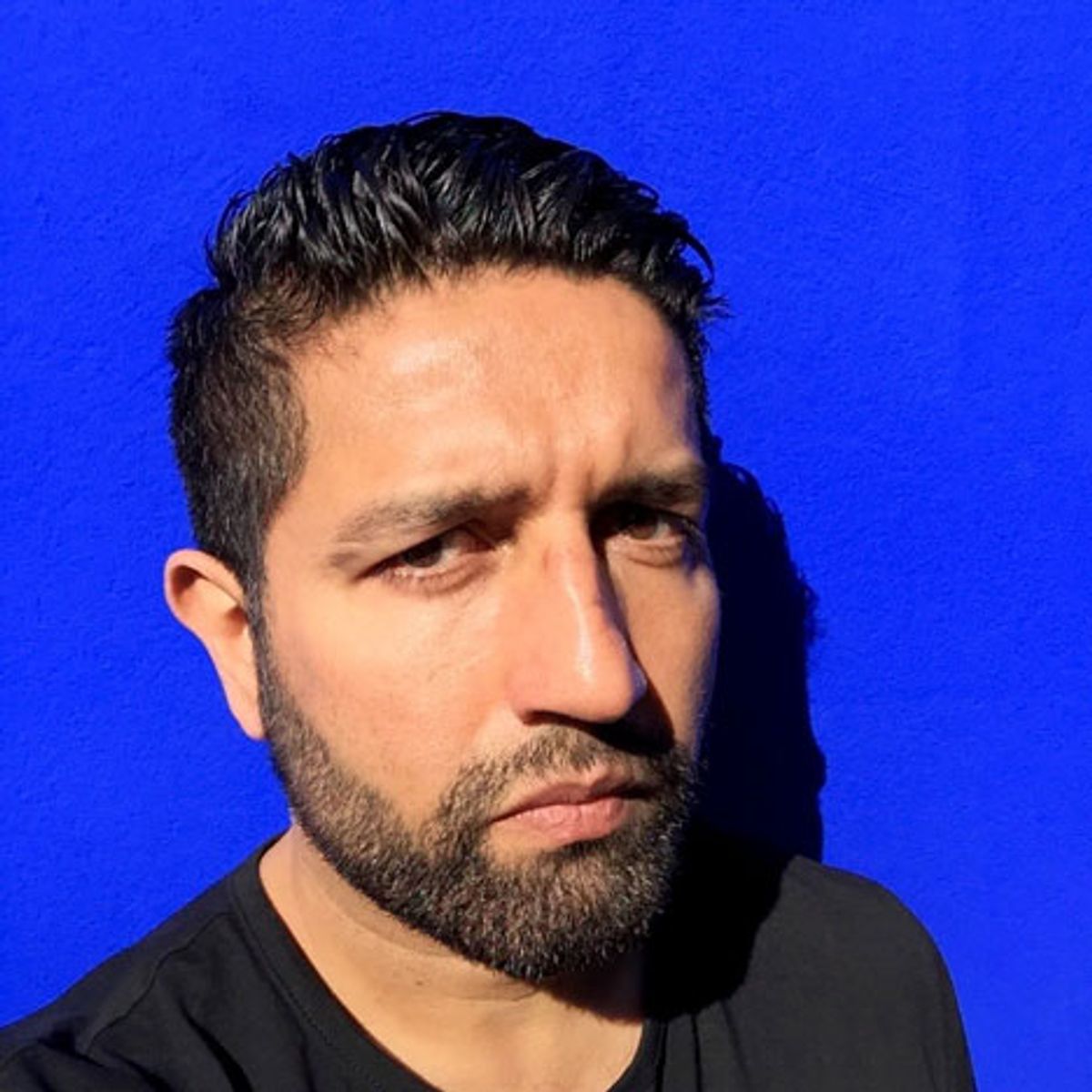The artist and designer Osman Yousefzada made waves last year when he wrapped a five-ton canvas around the Selfridges department store in Birmingham, UK, creating one of the world’s largest pieces of public art. The tessellated black and pink design Infinity Pattern 1, which evokes the geometric designs of Islamic art, was something of a homecoming piece as Yousefzada was brought up in the nearby Balsall Heath neighbourhood. In his new memoir, The Go-Between, he describes his “coming-of-age” experiences in the city. He studied at Central Saint Martins art school in London and has exhibited works at the Dhaka Art Summit in Bangladesh and Ikon Gallery in Birmingham.

Osman Yousefzada's Infinity Pattern 1 commission for Birmingham's Selfridges shopping centre Photo: Jason Alden
The Art Newspaper: There are some harrowing moments in the book including the destruction of all your paintings and sketchbooks by family members during your student years. Was this difficult to describe and convey?
Osman Yousefzada: I lived in two worlds, where one didn’t quite understand the other. Creating or painting animate objects wasn’t encouraged when I was growing up, it is discouraged in ultra-orthodox Islam. I would have to give life to these objects in the hereafter, so when I came to London at 18, I peered into other spaces. I managed to get into art school, and explored other worlds. But at some point the worlds caught up with each other, and as I left in a hurry one summer, everything I left behind was destroyed.
I have tried to understand why someone would do this, if they were scared of what I may become. The memories that were poured into those student paintings and sketchbooks, and how the fires consumed them, how the flames danced over my marks. It wasn’t difficult to describe, I saw how we built fires so on this occasion I imagined how they built my fire to get rid of what wasn’t needed. It threw up identities that couldn’t gel with other identities; these pluralities never co-existed but sometimes one consumes the other, and out of that consumption comes new identities and new frictions.
How did your 2018 show at Ikon Gallery in Birmingham, Being Somewhere Else, draw upon aspects of your life and upbringing?
The solo show at Ikon in 2018 allowed me space to assemble installations based on my auto-ethnographic narratives: where the personal becomes political, where the local becomes global, where reality meets fiction, and where migrant and diasporic threads are woven into a spatial context. I took my mum to see the installation [re-creating] her bedroom, she had never been to a museum before, and she looked at A migrants room of her own, a contra position to Virginia’s Woolf’s more privileged room of her own. And she asked who sleeps there; again I had entered another world. A woman who was illiterate, unable to read or write in any language, had asked a very obvious question. The world I had entered was a privileged one, where I could pontificate between white walls of a construct of a migrant safe space, but her observation was who owned this space and who slept in this bed? It’s the luxury of creativity, of being able to pontificate on something that’s all too real for too many people. The solo exhibition included conversations on female agency, garment workers and their dreams, male spaces and explorations of domestic violence.
Was creating Infinity Pattern 1 last year a turning point? Was creating the piece in your home city illuminating or challenging?
It was about taking over a non-marginalised space bang in the city centre, so it was a turning point, [seeing] spaces that we aren’t normally allowed to occupy. You could see it from my home streets, a mile from the city centre. I had uncles and cousins who drove in, who don’t normally go into the city but went to see the installation. The pattern is a tessellation inspired by Islamic geometry. The idea was that the pattern is infinite, it has no borders, so it was an ideal starting point for a conversation on migration and movement, and for a city built by immigrants who have always lived on the periphery.
Which art and design projects do you have planned this year?
I’m working on a film for the Museum of Contemporary Art Sydney and Ikon, which will be shown simultaneously in both spaces for the British Council AU-UK Season: one is a Sufi space and one is a transgender space. The piece is about ritualised space and transformation. Also, from July to September I have a series of contemporary art installations at the Victoria & Albert Museum in London celebrating 75 years of Pakistani Independence. This year I will be much more involved in the Migrant Festival, which I initiated, and happens annually at the Ikon Gallery.

The Go-Between: A Portrait of Growing Up Between Different Worlds by Osman Yousefzada
• The Go-Between: A Portrait of Growing Up Between Different Worlds, Osman Yousefzada, Canongate, 358pp, £14.99 (hb)



